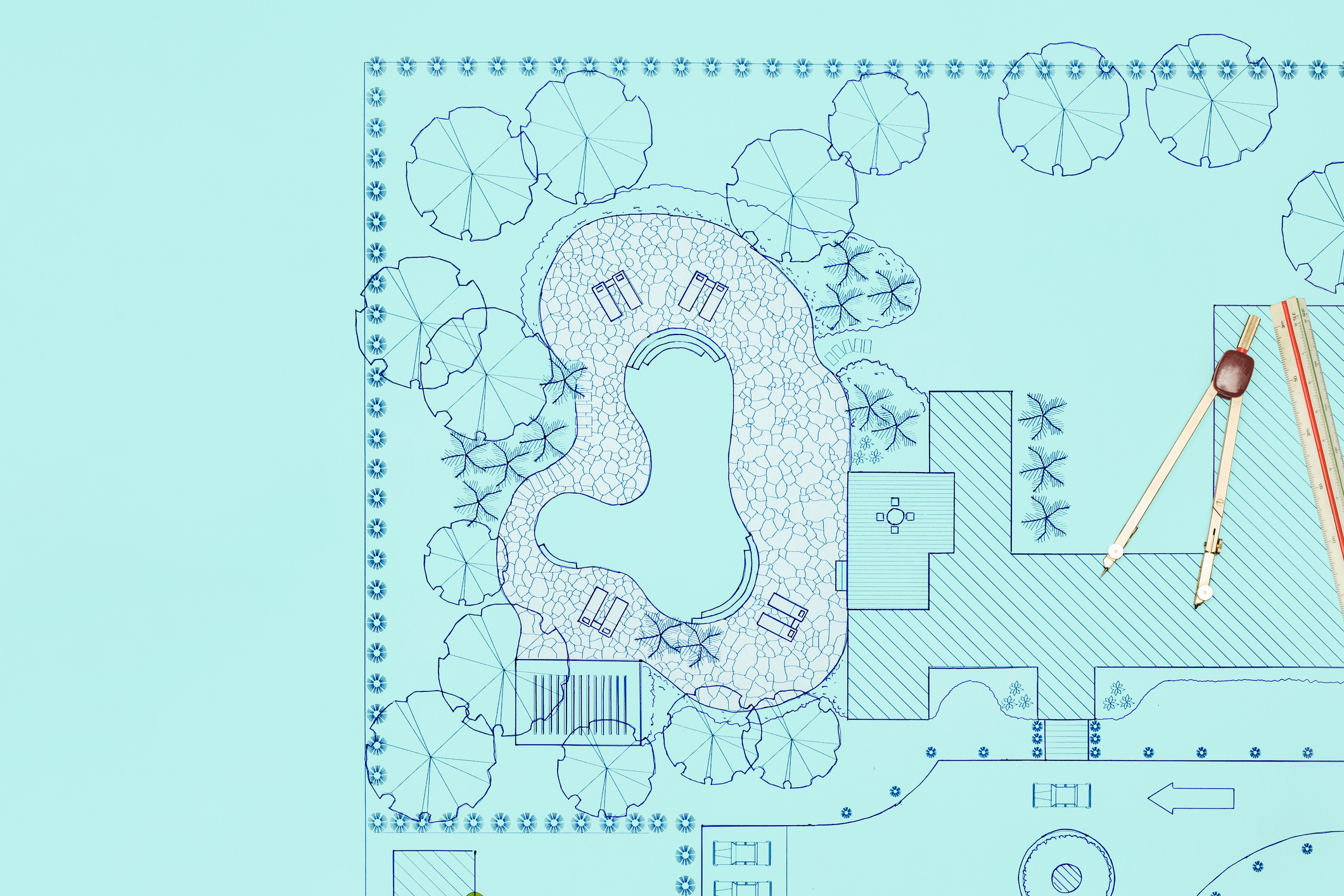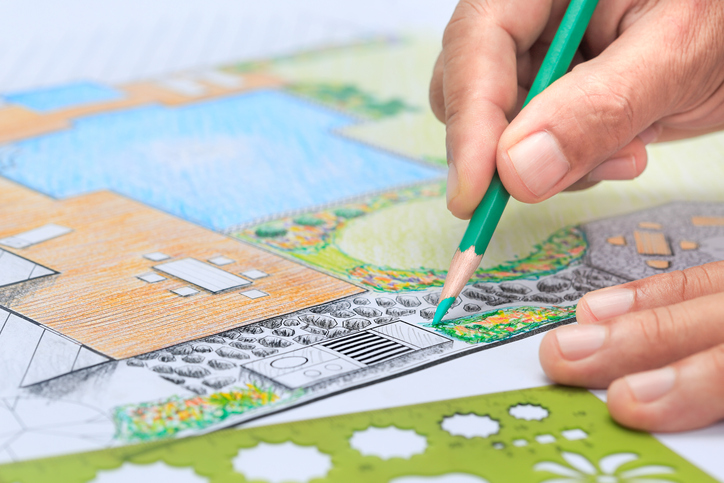Design Choices: Follow these 6 WaterSpace Design Principles

We all want to have design choices, to make our own choices. But have you ever been overwhelmed by too many choices? It happens a lot with the abundance of choices we have in America, and it seems to happen daily, now that we’re buying so much online.
Believe me, it’s going to happen frequently when you start creating your own outdoor living space. From imagining to planning, to building, there are hundreds—no, thousands—of small and large decisions to be made. And some of those seemingly inconsequential decisions may have very large consequences later on. That’s why every design decision has to be intentional, not accidental.
Of course you can avoid accidents if you’ve engaged a competent designer. But if you want to participate in the choices (and you should), you need to understand the reasons behind your designer’s recommendations. In this next series of articles on WaterSpace design, I’ll explain the six design principles that help you and your design team make the right choices.
Design Principles: Your First Choice
In this series, we’ll be referring back to the five elements of design that we covered previously: Space, Shape, Line, Color and Texture. The design principles we’ll be discussing provide the framework for how and why you chose to use these elements.
It may seem a little backwards that we started you off with the elements of design, and now we tell you to start your design based on principles that I’m just now introducing. But as I explained in the first article, the best pool and WaterSpace designs start with the space where you place the pool, and of course designers want to uncover early on your personal preferences for elements such as shape and color. When you’re ready to start thinking about the bigger picture that pulls it all together, that’s the time to think about which design principles you want to apply.
So as to avoid keeping you in further suspense, I’ll provide a brief overview of all six design principles: balance, contrast, emphasis, rhythm, movement, and unity. Let’s take them one at a time.

Balance
You have two choices when it comes to balance: symmetrical or asymmetrical.
◦ Symmetrical: Symmetry brings formality and grander to your design. It’s classical Greek temples and Roman villas, the French formality of Versailles, Tudor, and Neoclassical.
◦ Asymmetrical: This is nature’s balance. It’s an informal, natural look that goes well with rustic materials.
Contrast
You can hit a High C or a Low C with contrast.
◦ High Contrast: Go bold with high contrast. Stand out. Grab attention. Pull the eye toward one thing, or group of things, that say “look at me.” Get excited. Or sophisticated. Be noticed.
◦ Low Contrast: No standouts here. Plays nice with others. Fits in and fits together with other elements. Relax.
Get calm. Meditate. This is the level of contrast you want when you’re going for Unity, our sixth and final design principle.
Emphasis
Emphasis is artful. Like High Contrast, it lets you set a piece of your design apart from the rest.
◦ Focus on something or some area you want noticed. Everything else is background.
◦ Create a space to put a special sculpture or a fine piece of art on display.
Rhythm
Just as the ear enjoys the rhythms of music, your eye is attracted to the rhythm of objects. Rhythm eliminates that feeling of randomness and cleans up a cluttered look. It’s important to add rhythm to your design when you want Unity. Break this principle of Rhythm only when you intend to go for Emphasis or
High Contrast.
◦ Repetition: Use the same things repeatedly throughout the design
◦ Consistency: Create and maintain consistent patterns in your design
Movement
This one is fun. It’s design that moves eyes and feet to explore a space.
◦ Visual Movement: Movement captures the eyes, takes them across the scene, and brings them to rest on a carefully chosen focal point.
◦ Physical Movement: This is movement designed to inspire curios feet, an urge to see what’s around the corner. It’s about discovery and surprise.
Unity
Unity is the only design principle that most spaces must achieve. You don’t break this rule unless you’ve purposely chosen to pursue High Contrast or put Emphasis on a special element.
Up Next
In following articles we’ll go into greater detail on these six essential design principles. Next up, we’ll look at achieving balance in your designed space.

